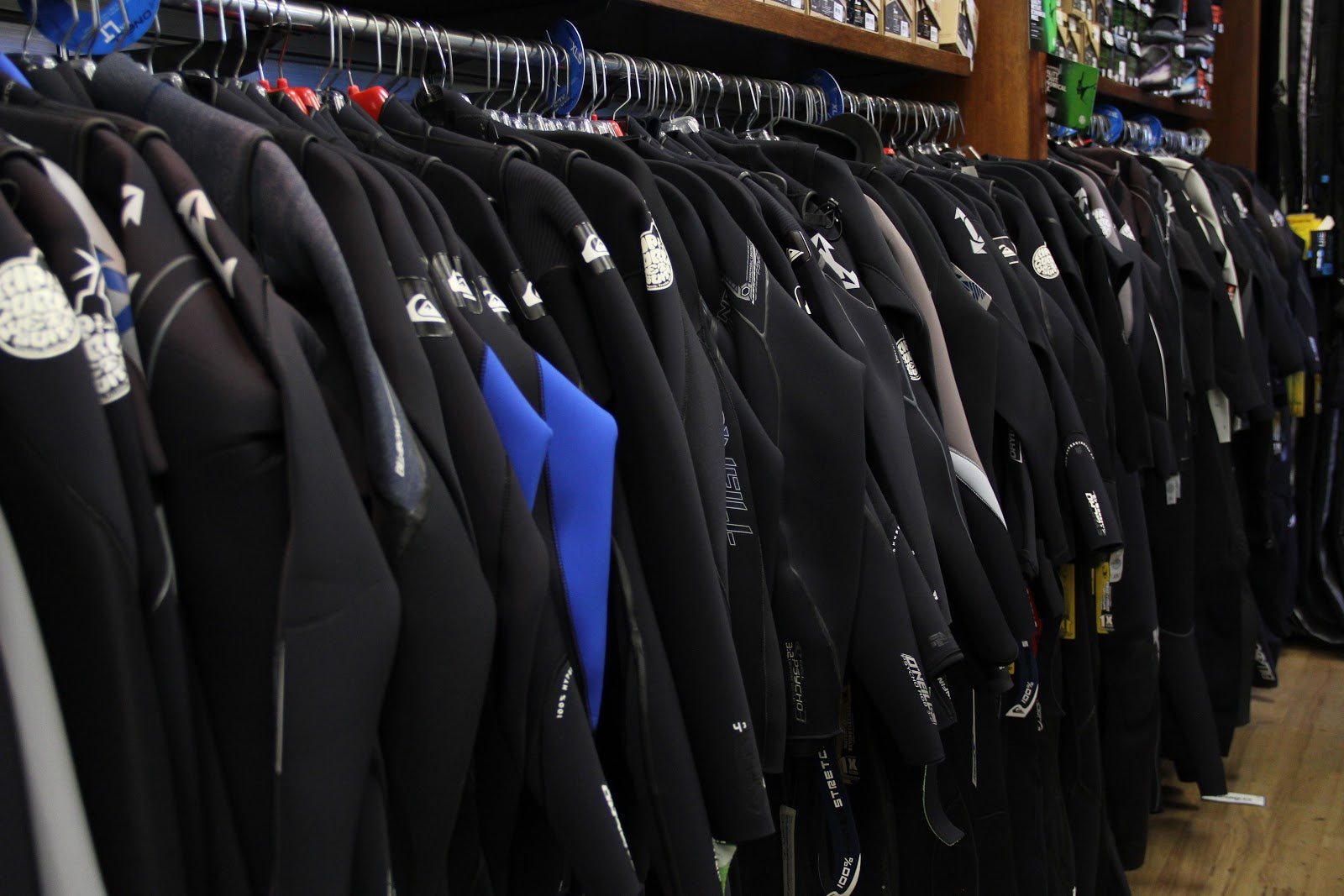Cart Details Should Go Here

Much like the surfboard, the humble wetsuit has had many major evolutions throughout the course of its existence. Thankfully, they’ve gotten a whole lot comfier over the years, and they fit all sorts body shapes and sizes, designed for a range ocean and air temperatures. These days, a wetsuit quiver can be just as important as a surfboard quiver, especially in places like Southern California where the climate is constantly changing throughout the year. It can be puzzling to know exactly which wetsuit is best for which conditions, so this guide, while not the definitive rulebook for wetsuit wearing, can be helpful when choosing your next neoprene get-up.
1. Full Suit
The classic long arm, long leg full wetsuit, also known as a “steamer” in some parts (e.g. Australia), is the go-to winter style. Depending on where you’re surfing, and where your temperature tolerance lies, you can choose how thick your suit will be. For the most part, in Southern California, you are choosing between a 4/3mm, 3/2mm, or 2mm suit. 4/3 means that the torso of the wetsuit is 4mm, while the arms and legs are 3mm. A 4/3 is generally adequate for a San Diegan winter, but some surfers get by in their 3/2 suits, which follow the same torso-to-limb neoprene ratio. If you handle the cold quite well, your best bet would be to stick with the 3/2mm, because it offers a greater range of mobility. I’ve never tried a 2mm full, but I have friends that really vouch for it as a winter to spring transition suit. Once you venture north to the chilly waters of Santa Cruz or San Francisco, you will see that many surfers are rocking 5/4/3 suits in the wintertime, but it would be sort of overkill down south.
2. Spring Suit
When someone says “spring suit,” I see an image of myself at the beach, age three, in my neon yellow and blue short arm / short leg Bodyglove wetsuit. I think that this style is often considered the staple of spring suits, but there are actually so many different variations of wetsuit that fit into the category! A 2mm thickness seems to be consistent across the board, but 1mm and 3/2 options are definitely out there. My personal favorite is the 2mm long arm spring, as it protects me from getting sunburnt (and a wicked farmer’s tan), and is comfortable for most months of the year. I wear a long arm spring that has a bikini cut, but for women’s suits, most brands offer all sorts of bottom options, teeny tiny to knee-length, so everyone can find their perfect fit. People generally think that in order to be considered a spring suit, the legs have to be to the knee or above, but a 2mm short-arm / long-leg (often referred to as a short arm full) would suit surfers whose legs get cold easily.
Although the long john is certainly within the “spring suit” realm, it gets a section of its own, because of its versatility, classic style, and overall goodness. I honestly think that a long john is one of the most important wetsuit items one can own, as it is useful literally anytime of the year (see Top / Jacket description for further enlightenment). Also generally 2mm, a long john has long legs and tank top arms, which, aside from looking real cool, helps keep a surfer warm while providing unlimited mobility in the arms. Also, with even more overlap into the spring suit category is a short john, which, you guessed it, has tank top arms and knee length legs.
Oh wetsuit jacket, how I love thee. Just like long johns, jackets can be used all year long. On a warm summer day with a little breeze, a wetsuit top is the perfect way to keep that core heated, and protect you from the sun. From front zip to no zip, 1mm to 2mm, and long sleeves to short sleeves (or a vest, if you’re feeling real minimal), these bad boys are just the best! So, you may be asking, where is this aforementioned further enlightenment, how can the long john and the jacket be SO dang useful? Well friends, imagine that icy cold winter day, where you’ve mustered up the energy to wake up at the crack of dawn to get that pre-work surf. You walk into the garage, only to find your full suit in the garage in a crumpled heap, long forgotten after yesterday afternoon’s session, still sandy and soaking wet. As if you’re going to go to the beach with that freezing cold wet wettie; no way Jose! But wait, what about that long john... and the jacket... they haven’t seen the light of day since September, and separately, they are both great for warmer temperatures. However, combined, these magical rubber entities become the glorious, perfect combination of warmth and mobility, the 4/2mm full suit! Popular among divers and surfers in the past, the resurgence of this style, while often touted as being “try-hard” or “hipster” is also just really useful, and if anything, a great back up option!
5. Accessories
Instead of getting a whole new suit, if you’re feeling a bit chilly, you can always stock up on accessories. Booties are common along the California coast, and the further north you go, the more hoods you will see in the lineup. In my opinion, gloves are a no-go unless it is absolutely freezing, but as always, do whatever floats your boat. Heck, if you want to, rep all of these accessories with just a swimsuit, it’s a free country!